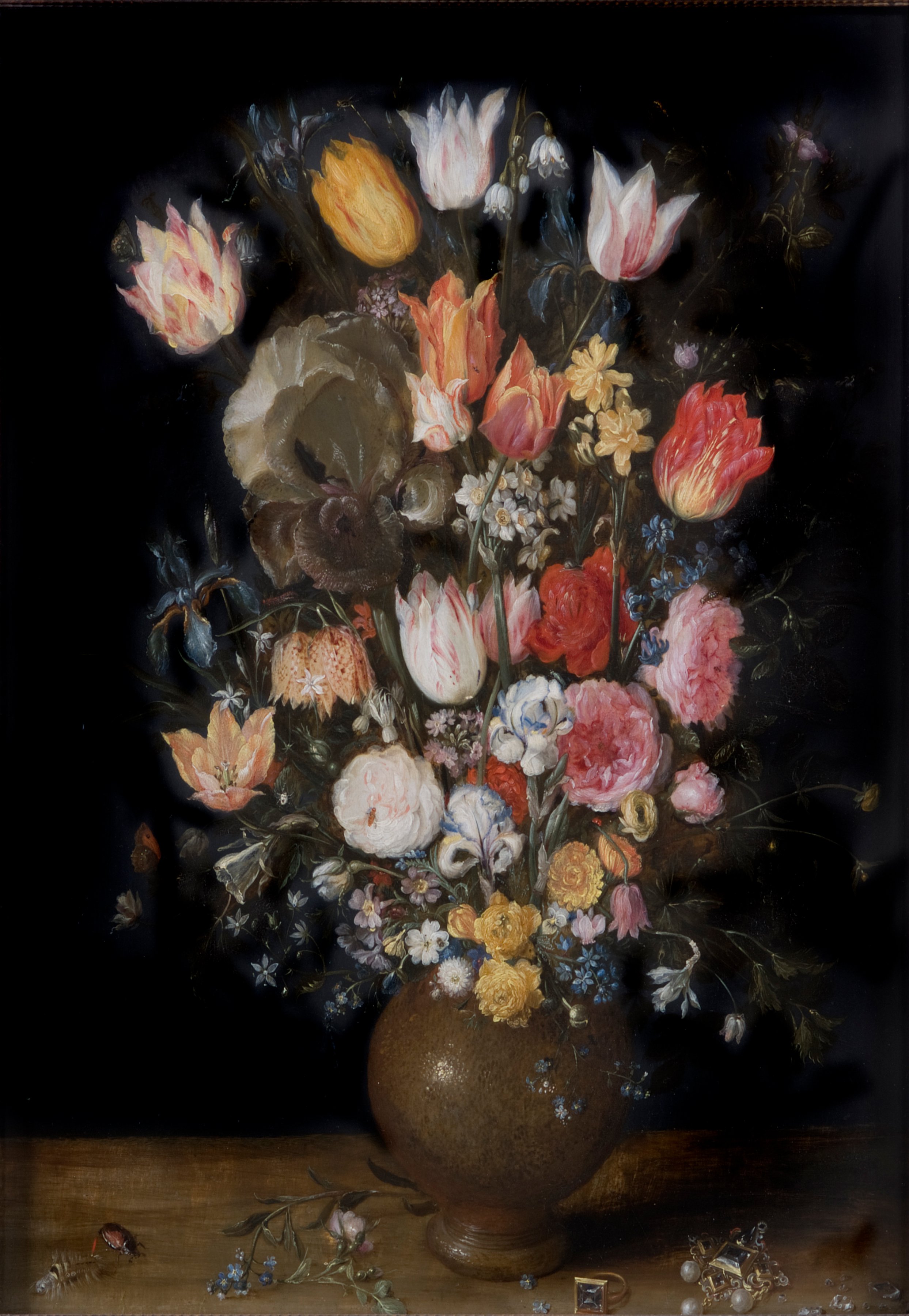6. Flowers in a Stoneware Vase, by Jan Brueghel the elder
 Jan Brueghel the elder, Flowers in a Stoneware Vase, H 65.4 x W 49.5 cm, oil on panel
Jan Brueghel the elder, Flowers in a Stoneware Vase, H 65.4 x W 49.5 cm, oil on panel
Flowers have been a major theme in Jan Brueghel’s art (indeed, one of the several nicknames he accumulated in the course of his career was ‘Flower Brueghel’), and he is one of the key figures in the development of the still life genre in Flemish painting, which begins to flourish in the early seventeenth century. In that, he was somewhat of a rebel in his family, departing from the topics that dominated the art of his father (and of his brother Pieter Brueghel the Younger, who followed in their father’s footsteps, and indeed produced many direct imitations). A considerable number of flower still lifes was commissioned from him by Federico Borromeo, a famous Counter-Reformation archbishop of Milan, to whose household Jan Brueghel belonged in the 1590s, and he continued to produce variations on the theme in his Antwerp workshop after he returned north. There is a number of variations on this particular subject: at the Fitzwilliam Museum in Cambridge (see on Art UK), Art Institute of Chicago, Musée d’Art et d’histoire at Geneva, and at least two in private hands, one of them displayed for a long time at the Národní galerie in Prague, but restored in 2016 to the heirs of Alphonse von Rotschild, from whom it was confiscated by the Nazi regime in 1939 (you can read a very interesting discussion of that version here, but it omits to mention the St John’s version).
These are not copies, but subtle variations on a theme, all the more interesting to explore because of the near scientific precision with which Jan Brueghel portrays his flowers – and because (as has often been remarked) for all that botanical precision it’s an implausible combination of flowers that would be in bloom at different times in the year, clearly a fruit of his artistic imagination. Tulips (interestingly, several decades before the tulip craze began in earnest), roses, fritillaries, irises, jonquils, forget-me-nots and marigolds are immediately recognizable and painted in minutest detail. In that sense he is very much the son of his father, and like in his father’s art we might think of connections between the manuscript miniature, in this case botanical illustration, and the big form.
We hope you enjoy his flowers in this season of wonderful bloom in Britain's gardens, and are interested in your thoughts about the meaning of this combination! Before the lockdown, the picture was due to join a very exciting exhibition at the Dulwich Picture Gallery, Unearthed: Photography’s Roots, where Jan Brueghel’s influence on modern photography would have been explored – we hope it will still be possible to show it there as museums reopen.
View the painting on Art UK here.
 Dr Georgy Kantor, Tutorial Fellow in Ancient History and Keeper of the Pictures
Dr Georgy Kantor, Tutorial Fellow in Ancient History and Keeper of the Pictures